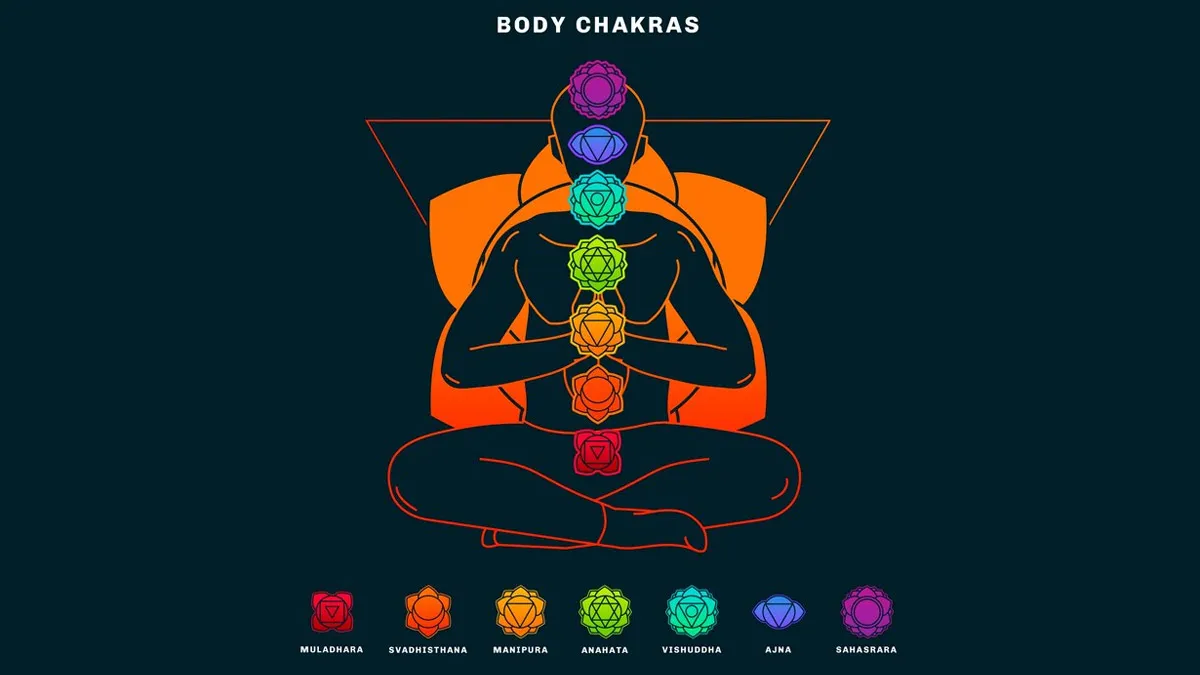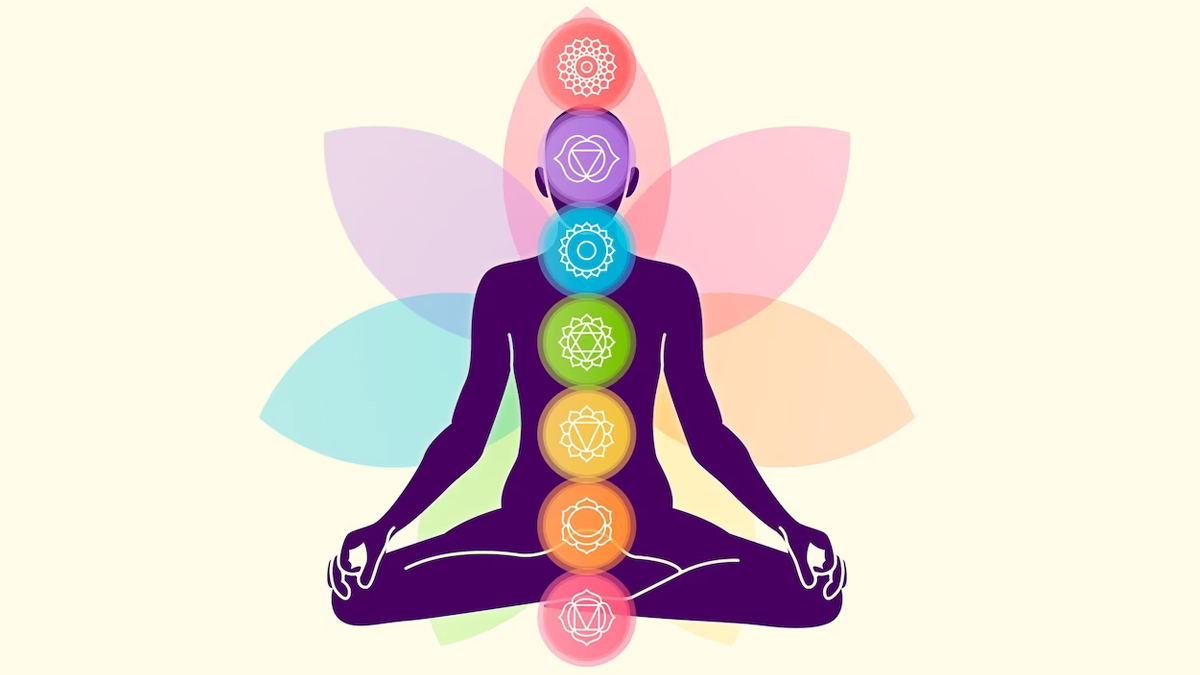
In our hectic world today, with everyone discussing mental health and self-care, we're witnessing an interesting phenomenon. As individuals become more woke, many of them are turning to ancient, age-old practices to seek peace and equilibrium. One of these rituals, known as chakra balancing, has become extremely popular. You've likely heard many online influencers and even people on social media feeds discussing and explaining how chakra balancing improved their overall well-being.
Table of Content:-
With everybody discussing it, it's easy to get confused about what's real and what's just a trend. To find the true story, we spoke to our expert, Shrey Kumar Srivastav, Senior Consultant and General Physician, Sharda Hospital - Noida, to understand this practice and if there's any science behind it at all to support the theories that it can improve how you feel.
Understanding the Chakras
The idea of chakras comes from very old Hindu and yogic practices, which date back several millennia. Chakra, in Sanskrit, literally means wheel or disk, and they are said to be rotating vortices of energy that lie along the central channel of the body, from the base of the spine to the top of the head.
Although each tradition identifies different numbers of chakras, the most commonly cited system includes seven primary energy centres:
- Root Chakra (Muladhara): Placed at the base of the spine, it is connected with stability, grounding, and survival.
- Sacral Chakra (Svadhisthana): Placed in the lower abdomen, it is related to creativity, emotions, and pleasure.
- Solar Plexus Chakra (Manipura): Placed in the upper abdomen, it is related to self-esteem, personal power, and confidence.
- Heart Chakra (Anahata): Centred in the chest, controlling love, compassion, and relationships.
- Throat Chakra (Vishuddha): In the throat, managing communication and self-expression.
- Third Eye Chakra (Ajna): Between the eyebrows, associated with intuition, wisdom, and imagination.
- Crown Chakra (Sahasrara): At the crown of the head, linking us to spirituality and higher awareness.
“In this philosophy, every chakra is in control of certain bodily, emotional, and mental functions. When these centres of energy move freely, there is harmony and health. However, blockage or imbalance in one or more chakras is said to result in physical pain, emotional angst, and a confused mind,” Dr Srivastav noted from his research.

Also Read: 5 Fitness Myths Men Need to Stop Believing Today
What Is Chakra Balancing?
In simpler terms, Chakra balancing is the process of cleansing and balancing these energy centres so that the natural flow of energy can be re-established. This is not a one-size-fits-all remedy, but an individualised process that can be adapted to what one needs.
Practitioners and individuals utilise a number of different techniques to accomplish this balance. Among the most widely used are:
- Meditation and Visualisation: Mental focus on each chakra, imagining it as a shining, spinning wheel of light. Descriptive colours and sounds (mantras) are frequently utilised to associate with each chakra.
- Yoga: Specific postures (asanas) of yoga are formulated to engage and activate specific chakras, releasing blockage and enhancing energy flow.
- Sound Therapy: Using objects such as singing bowls, tuning forks, or even particular musical notes to send vibrations that resonate with and cleanse each chakra.
- Crystals and Gemstones: Each of the chakras has corresponding crystals said to possess certain energetic qualities. Holding or placing such stones on or near the body while meditating or resting is a common technique.
Also Read: Struggling To Sleep Even When You’re Tired? Here's What You're Doing Wrong
Does Chakra Balancing Really Work?
“Although the scientific community has yet to locate tangible evidence of these energy centres, the claimed benefits of chakra balancing are often explained in terms of the mind-body connection,” Dr Srivastav added. The techniques employed in chakra balancing have been widely accepted as beneficial to well-being, including:
- Stress reduction
- Increased self-awareness
- Enhanced mental concentration
"Let's not underestimate the strength of belief and placebo. If someone believes that the practice will make them feel better, their positive expectation will create a cascade of positive physiological and psychological reactions. Not that the practice is ineffective, but that the mind's contribution to the process of healing is powerful beyond measure," Dr Srivastav concluded.
Bottomline
Chakra balancing is not a magic solution, and it cannot be used instead of traditional medical counsel. However, it can be an excellent and potent addition to your wellness path. It provides a self-care paradigm that teaches awareness, introspection, and a close relationship with the subtle energies of your body. Try it for yourself and see if the journey of aligning your energy to live a more balanced, meaningful life is really working for you.
Also watch this video
FAQ
1. Can I tell if my chakras are out of balance?
There is no medical diagnosis for chakra imbalance, but lots of people experience a range of symptoms. For instance, a blocked root chakra could be felt as insecurity or anxiety, and a blocked throat chakra as being unable to express oneself. These are personal feelings, and the process of chakra balancing provides an avenue through which to deal with them as a whole.2. Is chakra balancing a religious practice?
Although the theory of chakras originated in Hinduism and yoga, the activity of balancing chakras in itself is more regarded as a spiritual or holistic health practice than a religious one. People of different backgrounds adopt these methods for self-improvement and stress relief.3. How long does it take to get results from chakra balancing?
The effects of balancing chakras can be drastically different from individual to individual. Some individuals feel calm and sharp after a single session, whereas others find it a process of gradual improvement that comes with repeated practice. The idea is to approach it as a self-discovery and care process rather than a one-time solution.
How we keep this article up to date:
We work with experts and keep a close eye on the latest in health and wellness. Whenever there is a new research or helpful information, we update our articles with accurate and useful advice.
Current Version
Oct 19, 2025 10:57 IST
Modified By : Chanchal SengarOct 19, 2025 10:57 IST
Published By : Tanya Srivastava